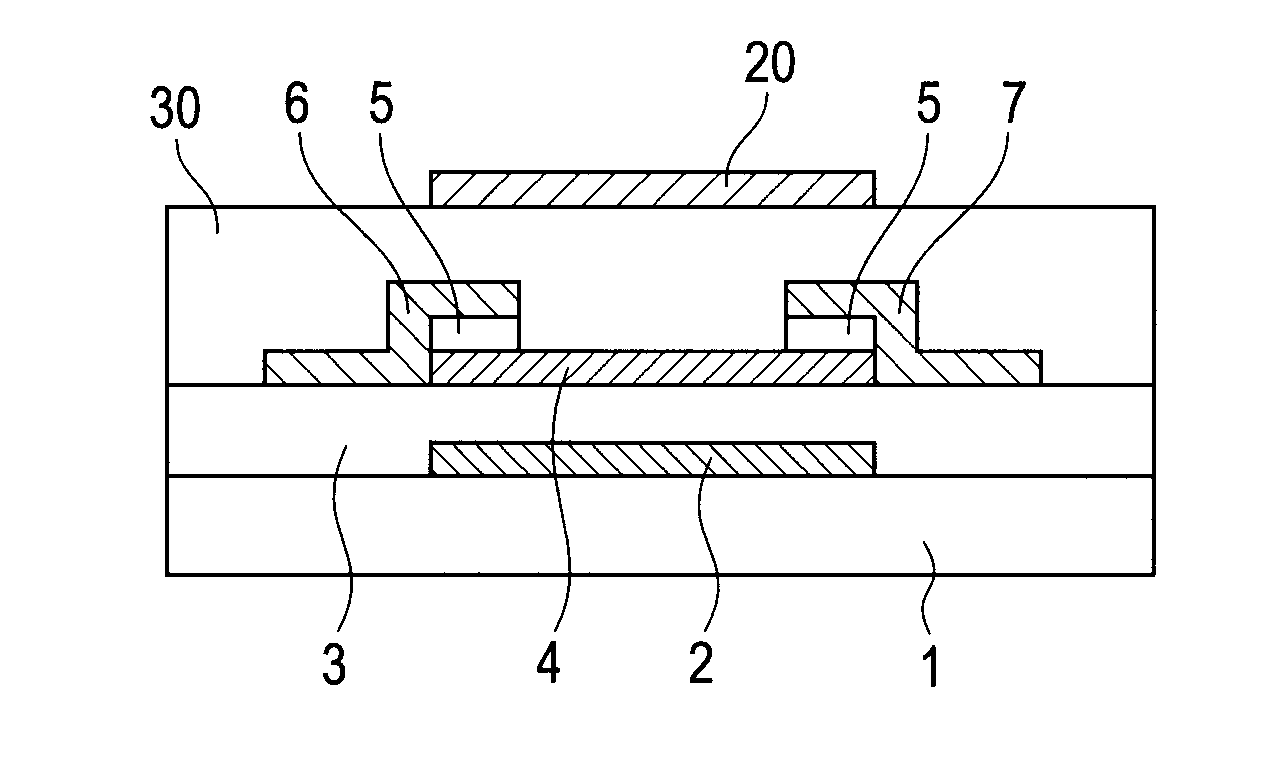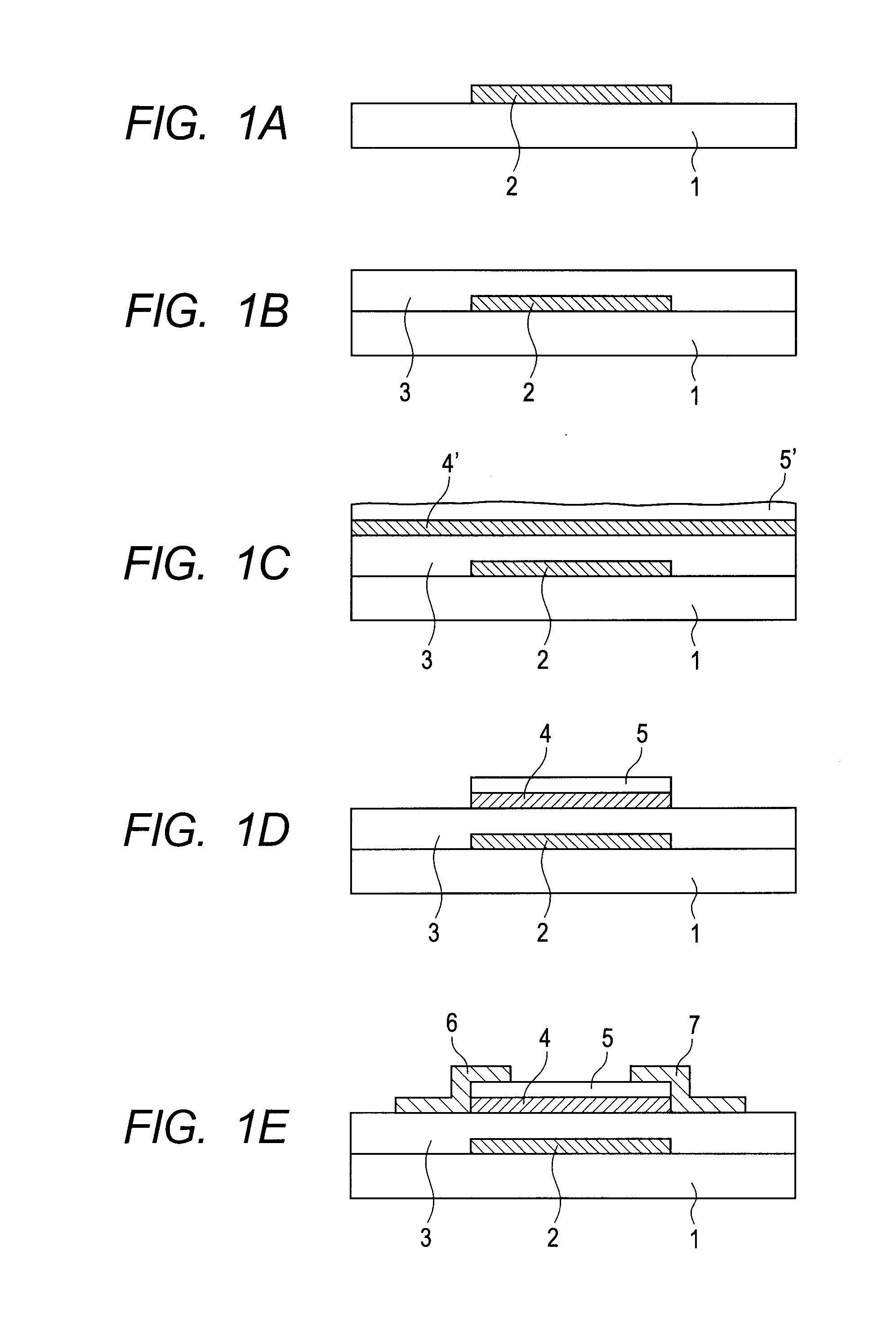Channel-etch type thin film transistor and method of manufacturing the same
- Summary
- Abstract
- Description
- Claims
- Application Information
AI Technical Summary
Benefits of technology
Problems solved by technology
Method used
Image
Examples
example 1
[0053]A bottom gate, channel-etch type TFT was prepared by following the steps illustrated in FIGS. 1A through 1H. Now, each of the steps will be described below.
[0054]A glass substrate (1737, available from Corning) was used for the substrate 1. The glass substrate had a thickness of 0.5 mm. Firstly a 100 nm-thick Mo thin film was formed on the substrate 1 by means of DC magnetron sputtering in an atmosphere of Ar gas. Then, the deposited Mo thin film was micro-processed to produce a gate electrode 2 by means of photolithography and dry etching (FIG. 1A).
[0055]Thereafter, a 200 nm-thick SiO2 thin film was formed as a gate insulating layer 3 on the gate electrode 2 by plasma CVD (FIG. 1B).
[0056]Subsequently, a 40 nm-thick In—Ga—Zn—O thin film (oxide semiconductor layer 4′) was formed on the gate insulating layer 3 by means of DC magnetron sputtering with a DC power supply rate of 3.7 W / cm2. The In—Ga—Zn—O thin film formed in this way was amorphous and the composition ratio of In:Ga:...
PUM
 Login to View More
Login to View More Abstract
Description
Claims
Application Information
 Login to View More
Login to View More - R&D
- Intellectual Property
- Life Sciences
- Materials
- Tech Scout
- Unparalleled Data Quality
- Higher Quality Content
- 60% Fewer Hallucinations
Browse by: Latest US Patents, China's latest patents, Technical Efficacy Thesaurus, Application Domain, Technology Topic, Popular Technical Reports.
© 2025 PatSnap. All rights reserved.Legal|Privacy policy|Modern Slavery Act Transparency Statement|Sitemap|About US| Contact US: help@patsnap.com



